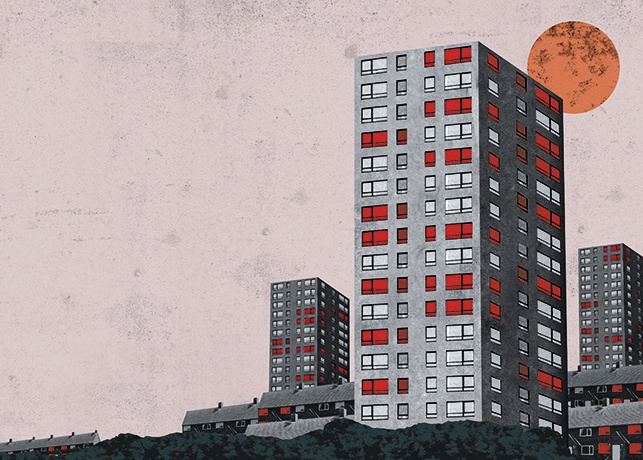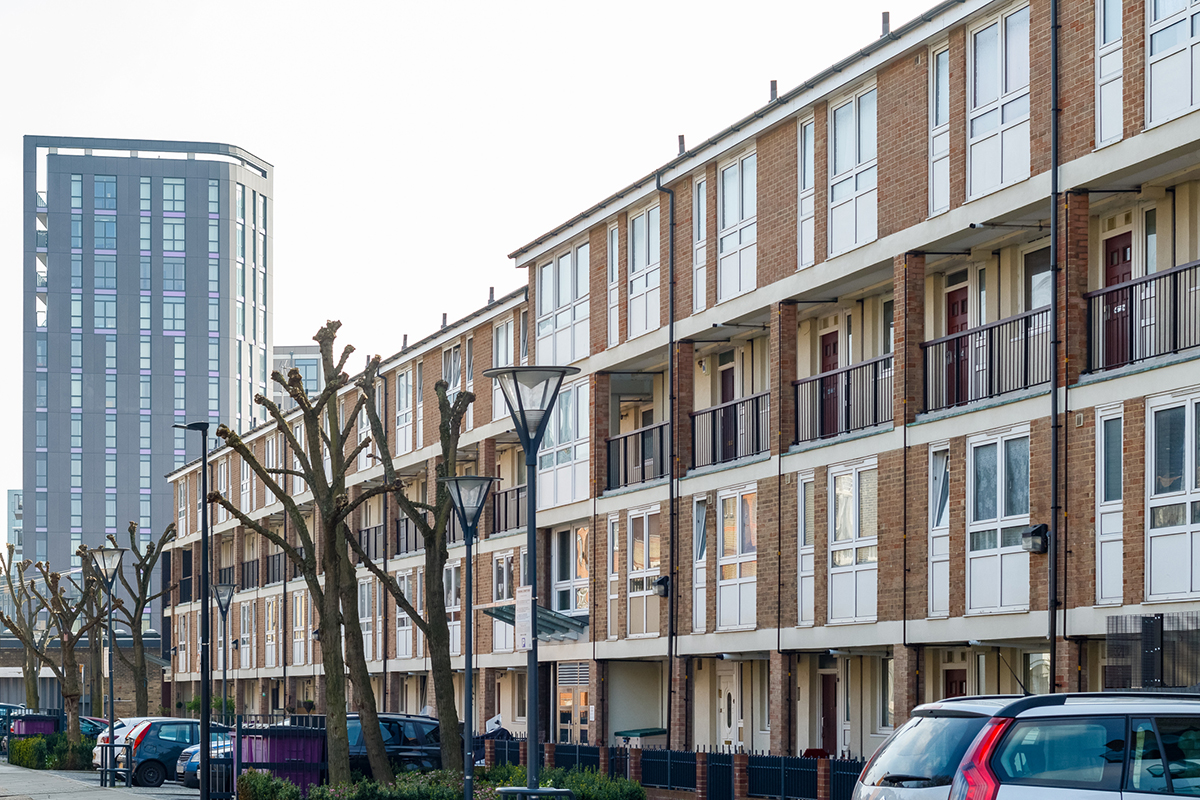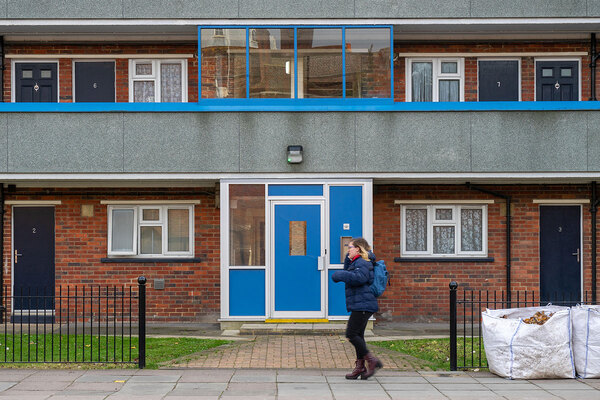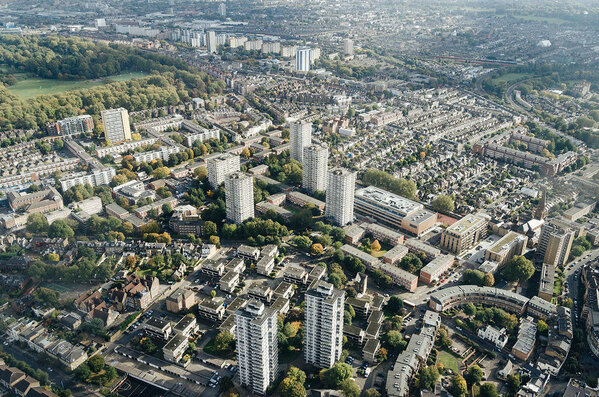You are viewing 1 of your 1 free articles
Right to Buy to Let
Exclusive Inside Housing research reveals almost 40% of ex-council homes sold under the Right to Buy are now in the private rented sector. Pete Apps considers the impact of the move from Right to Buy to buy-to-let

Source: Nate Kitch
There is a two-bedroom flat listed on Zoopla, which sums up – in a nutshell – why so many people paying attention to housing policy in the UK get annoyed about the Right to Buy.
It is a first-floor flat in Bermondsey, south London, just a short walk from Tower Bridge and Boris Johnson’s glossy headquarters on the south bank of the Thames.
It has a small, well-fitted kitchen, a lounge and a balcony. From its brown-brick exterior, it is unmistakably part of London’s 1960s council house building boom, but according to its description on the property listings site, it is now “ex-local authority”.
The letting agent is offering the flat for £1,712 per month, a 409% mark-up on the average rent for a council flat in Southwark of £418.
This rent increase is extreme, but the move into the private rented sector (PRS) is a trend that exclusive research by Inside Housing demonstrates is being replicated all across England.
Freedom of Information Act responses from 91 councils show they have sold a combined 127,763 council flats and maisonettes since the Right to Buy was introduced in 1980.
Among these, 47,994 leaseholders are registered as living away from the property – a strong suggestion that they are renting it out privately. This means 37.6% of the council homes which were sold off at a discount in the hope of fulfilling a homeownership dream, are now back in the rental sector. Just for much higher rents.
Inside Housing arrived at the figure by asking councils how many residential leaseholds have been sold. This occurs where a flat or maisonette is sold to a tenant under the Right to Buy – with the council continuing to own the freehold of the block.
Councils were then asked how many leaseholders have registered an away address, which indicates the property is being sub-let. While this does include a small margin for error where, for example, family members live in the home free of charge, it provides the best possible estimate and is the figure some local authorities use to estimate how many homes are being rented privately.
Changing estates
So what is the impact of so many ex-council flats going into the private rented sector?
The first is that the higher rents are railroading through changes to the traditional make-up of estates, especially in high-value areas like London.
“It is fundamentally changing the nature of former social housing estates, because the people who can afford the private rents are not the same people who could afford social housing rents,” says Karen Buck, Labour MP for Westminster North.
“Over the years, I have seen many of our estates become virtual honey pots for estate agents and landlords,” adds Pat Callaghan, cabinet member for housing in Labour-led Camden – where 36% of the 8,922 leasehold properties are sub-let.
She says estate agents flyer estates, particularly seeking older tenantswho want to move out of the city. They then fund the purchase, allow them to move and the property goes straight into the private rented sector.
“The landlords want to get as much money as they can for the property, so they split it up and let it out, often to a group of students to share,” she says.
Philip Glanville, cabinet member for housing in Hackney (7,423 leaseholders, 26% sub-letting) agrees.
“When I first got elected in 2006, the estates were mainly people who owned the home or council tenants,” he says. “Now there are a lot of professional sharers and students.”
This trend is not confined to London. Nick Atkin is chief executive of Halton Housing Trust, which owns 6,400 homes in Cheshire following a transfer from the council, and many of them remain subject to the Right to Buy.
“One in four sales is made to someone who is in receipt of housing benefit, so they are often not the person buying the home,” he says.
“It can be friends and family, but it is also companies who offer to purchase the home on their behalf.”
Catherine Hand, a partner at Trowers & Hamlins solicitors, explains that while there are restrictions on when a tenant can sell their Right to Buy home, there is nothing councils can do under the current system to prevent immediate sub-letting.
Knock-on effect
This has a knock-on effect on estate management. Social landlords remain responsible for the upkeep of the estate as a whole, but not the homes in the private sector.
“We have invested £130m into our homes and neighbourhoods, and some private landlords obviously don’t invest to the same standard,” says Mr Atkin.
Ms Callaghan explains that the council spends time and legal resources tracking down private landlords to repair properties – and also picks up the tab where their actions damage surrounding stock.
“One landlord moved a group of four students into what was originally a two-bedroom flat,” she says. “The tenant below contacted us, because it flooded the sewage system and she had urine running down her walls.”
There is also the cost to the public purse in housing benefit and temporary accommodation. Both Camden and Hackney, and many councils all across the country rent back the homes they sold at a discount to provide temporary accommodation to tenants.
This means there is a hit to the housing benefit bill – as the private landlord charges a market rate for the property and the taxpayer picks up the cost.
Inside Housing’s research comes as the Conservative government prepares to extend full Right to Buy discounts to 1.3 million housing association tenants – and sell thousands of high-value council homes to fund it.
During the election campaign, David Cameron made this extension one of his flagship policies, saying: “Conservatives have dreamed of building a property-owning democracy for generations.”
But with nothing in place to prevent homes going into the private rented sector, Mr Cameron may in fact be subsidising a new generation of buy-to-let landlords.
Indeed, the research shows that across the 91 councils, 2,020 leaseholders have bought their home since discounts were raised in 2012, and already registered an away address.
Kathleen Kelly, assistant director of policy and research at the National Housing Federation, says this demonstrates one of the reasons why it is keen to explore changes to the planned extension.
“Clearly once a home is sold through Right to Buy, owners are free to sell the property on after a period of time and many of these homes do end up in the hands of private landlords,” she says.
“That is why we are keen to explore with government the other ways that housing associations can help more families get on the path towards buying their own home, such as shared ownership and buying smaller stakes.”
Government’s defence
In response to the research, Brandon Lewis, housing minister, re-issued the government’s explanation of its plan to extend the Right to Buy, saying: “It is important that councils make the best use of their assets and manage their housing stock as efficiently as possible. So it is right that as high-value council homes become empty, they should be sold to fund new affordable housebuilding in the same area.”
The Department for Communities and Local Government refused to comment in any further detail on the findings.
The research follows a similar study by the Daily Mirror two-and-a-half years ago, which looked at the figures from 13 large metropolitan areas, and concluded a third of homes were in the private rented sector.
Further research by London Assembly member Tom Copley last year showed an average of 36% of homes across London boroughs.
But Inside Housing’s is the most comprehensive nationwide study – and suggests an increasing trend.
Of the 13 London boroughs that responded to both Mr Copley and Inside Housing, nine showed an increased proportion of likely sub-lets in just 12 months. The most marked rise was in Brent, which saw an additional 200 leaseholders with away addresses in the year – going up from 25% to 32.9% of properties sold.
Nationwide, six local authorities have now reached a tipping point where more than half the flats sold under Right to Buy are being rented privately. In Milton Keynes, the most heavily affected, 69.6% of the 1,610 leaseholds sold have away addresses [see box].
To test the theory that these homes are out of reach of the working poor, Inside Housing telephones the letting agent for the Bermondsey property described above. We pose as a local teaching assistant and requested a viewing of a home – once built at the public’s expense to house London’s working poor.
“I’m not being rude, but how much do you earn?” the letting agent asks. We say £18,000 per year, and explain that we hope to qualify for housing benefit to help pay the rent.
“We don’t take tenants on housing benefit,” the agent responds curtly and ends the call. It appears the fears are justified.
Top 10 areas of Right to Buy sub-letting
| Rank | Local authority | Leaseholds sold | Away address registered | Approximate % sub-letting |
|---|---|---|---|---|
| 1 | Milton Keynes | 1,610 | 1,121 | 69.6 |
| 2 | Stevenage | 1,365 | 893 | 65.4 |
| 3 | Blackpool | 397 | 259 | 65.2 |
| 4 | Corby | 591 | 371 | 62.8 |
| 5 | South Kesteven | 128 | 73 | 57.0 |
| 6 | Kingston | 1,497 | 752 | 50.2 |
| 7 | Enfield | 4,670 | 2,264 | 48.5 |
| 8 | Northampton | 808 | 384 | 47.5 |
| 9 | Nuneaton | 430 | 204 | 47.4 |
| 10 | Stoke | 348 | 165 | 47.4 |
Source: Inside Housing research













